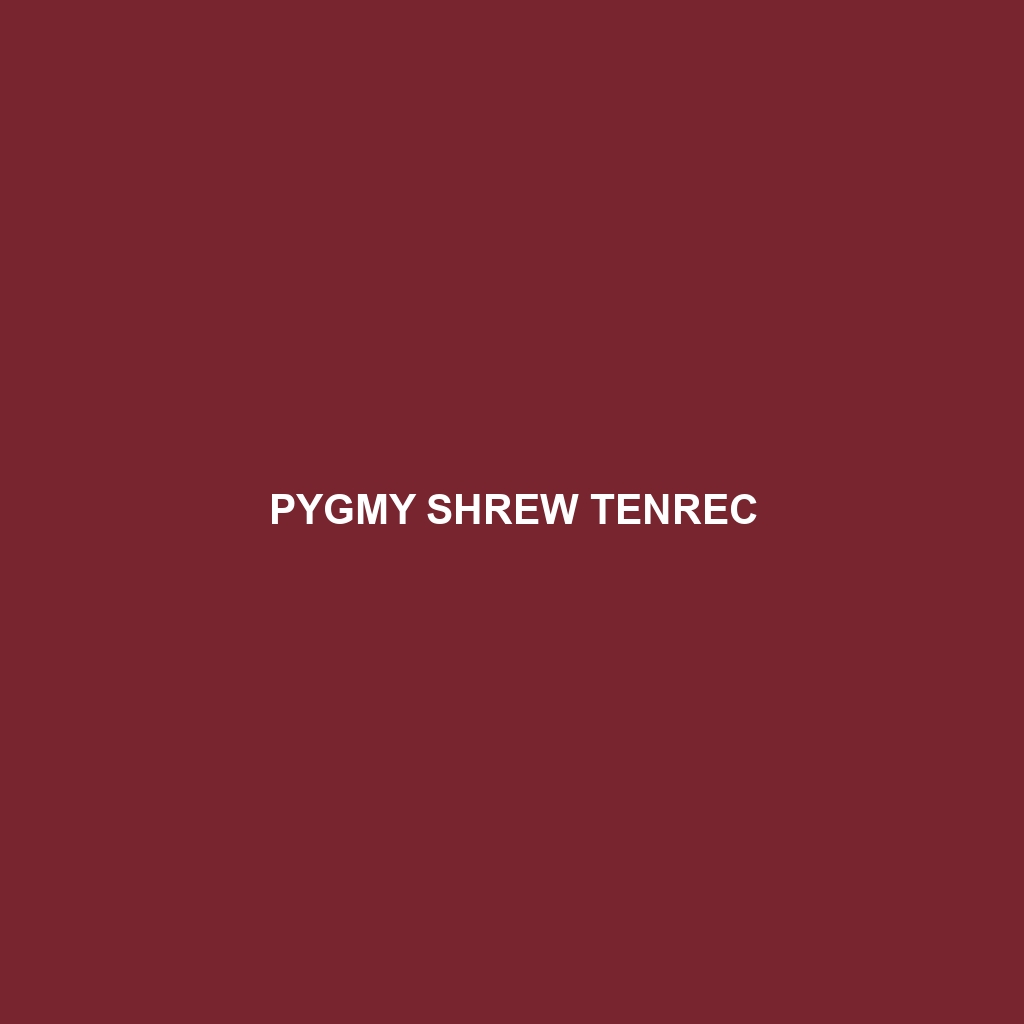Pygmy Shrew Tenrec: A Comprehensive Overview
The Pygmy Shrew Tenrec (Microgale parvula) is a small, insectivorous mammal native to the unique ecosystems of Madagascar. With their diminutive size and shrew-like appearance, these tenrecs are fascinating creatures that play a significant role in their habitats. Despite their small stature, they exhibit remarkable adaptations and behaviors that make them an intriguing subject for wildlife enthusiasts and researchers alike.
Physical Characteristics:
Size: Pygmy Shrew Tenrecs are among the smallest members of the tenrec family, typically measuring between 4 to 6 centimeters in body length, with a tail length that can add an additional 3 to 5 centimeters. They generally weigh around 3 to 7 grams.
Coloration: Their fur is usually a soft, grayish-brown color, providing excellent camouflage against the forest floor. The underbelly tends to be lighter, often a pale gray or off-white.
Special Features: These tenrecs have elongated, pointed snouts and large, sensitive whiskers that help them navigate and locate prey in their dark, forested environment. Their small, beady eyes suggest limited vision, compensated by an acute sense of smell and touch.
Behaviors:
Social Interactions: Pygmy Shrew Tenrecs are generally solitary animals, coming together only for mating purposes. They communicate through a series of high-pitched squeaks and other vocalizations, as well as scent markings.
Feeding Habits: These insectivores primarily feed on insects, spiders, and other small invertebrates. They are adept hunters, using their keen senses to detect and capture prey. Their diet helps control insect populations, making them important for ecological balance.
Ecological Roles: As both predator and prey, Pygmy Shrew Tenrecs occupy a crucial niche in their ecosystem. They help regulate insect populations and provide a food source for larger predators, including birds of prey and small carnivorous mammals.
Habitats:
Preferred Environment: Pygmy Shrew Tenrecs are typically found in the humid, tropical rainforests of eastern Madagascar. They thrive in dense, leaf-littered forest floors where they can easily hunt for food and hide from predators.
Range: While their exact range is not extensively mapped, they are primarily localized to Madagascar’s eastern regions, where the rainforest habitat provides the moisture and cover they need.
Adaptations:
Physiological Adaptations: Their small size and high metabolism require them to eat frequently, which is facilitated by their efficient hunting skills. Their sensitive whiskers and acute sense of smell are crucial for locating prey in the dark, dense underbrush.
Behavioral Adaptations: Pygmy Shrew Tenrecs are mostly nocturnal, reducing the risk of predation and competition for food. Their solitary nature minimizes competition among individuals for limited resources.
Conservation Status:
Current Status: The conservation status of the Pygmy Shrew Tenrec is not well-documented, but habitat destruction due to deforestation in Madagascar poses a significant threat to their populations. Efforts to conserve Madagascar’s unique ecosystems are crucial for the survival of this and many other endemic species.
Fascinating Fun Facts:
Unique Evolution: Tenrecs are part of a unique evolutionary lineage that dates back to when Madagascar separated from the African continent. This isolation has led to the evolution of many unique species found nowhere else on Earth.
Diverse Family: The tenrec family is incredibly diverse, with members ranging from the tiny Pygmy Shrew Tenrec to the larger, more robust species like the Lowland Streaked Tenrec.
High Energy: Due to their small size and high energy demands, Pygmy Shrew Tenrecs must consume almost their body weight in food each day to sustain themselves.
By featuring the Pygmy Shrew Tenrec on your website, you can highlight the remarkable characteristics and ecological importance of these tiny but fascinating creatures, raising awareness about the need for conservation efforts to protect their natural habitats.
